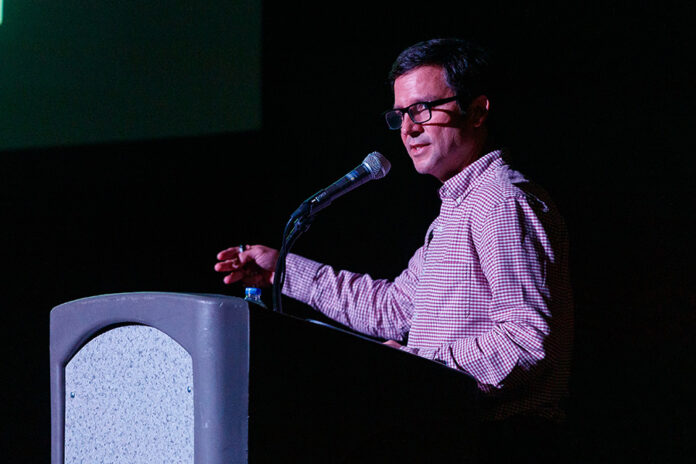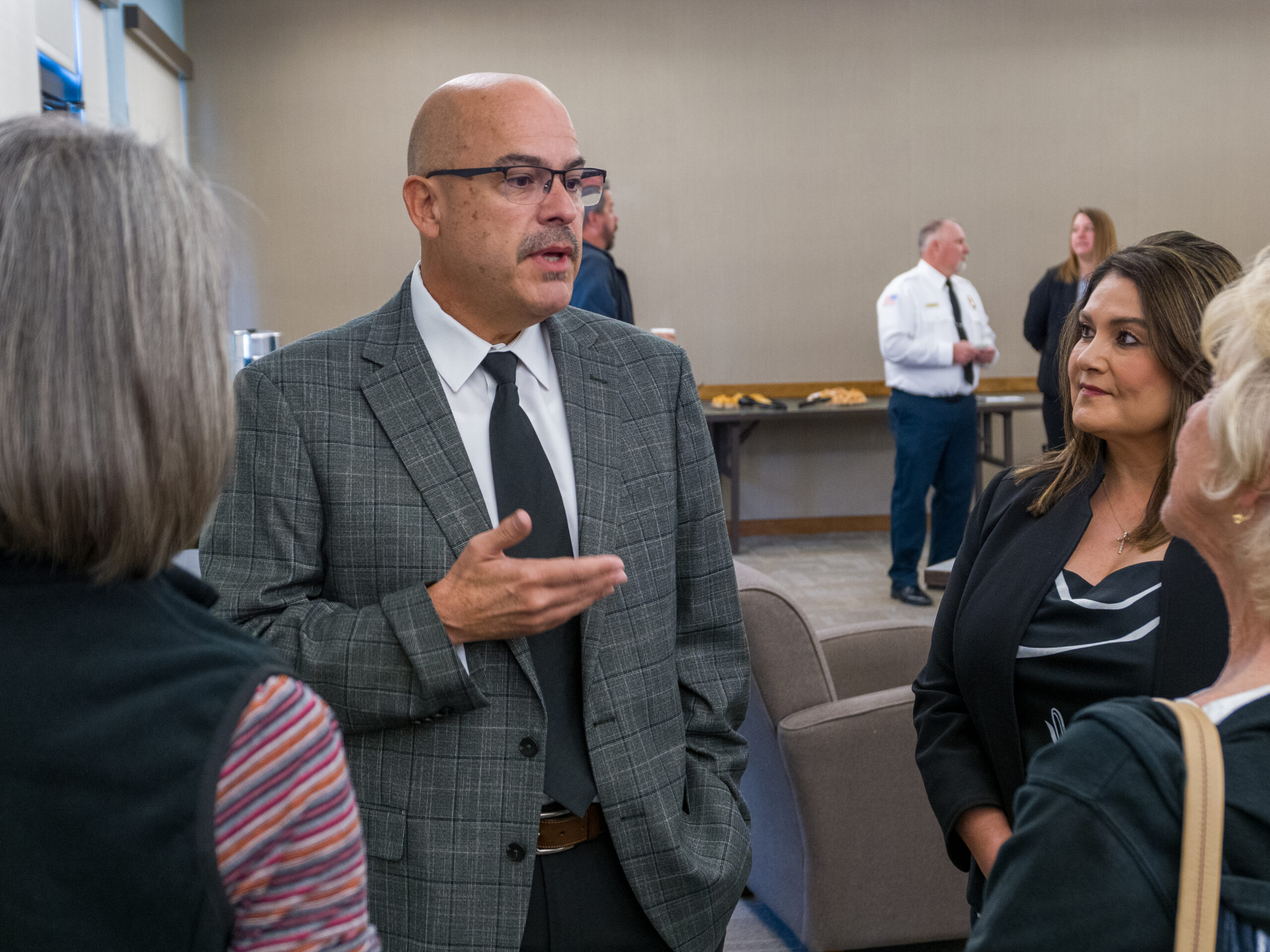Maurice Crandall, Ph.D., presented his lecture “After the Whirlwind: Yavapai-Apache Scouts and the Worlds They Made” at the Phillip England Center for the Performing Arts on Sunday, Feb. 5.
The presentation also included vocal performances from two groups, The Bird Singers and The Dilzhe’e Group, which emphasized the importance of involving young people in preserving a culture.
Crandall grew up in the Verde Valley and graduated from Mingus Union High School. He is an associate professor of history at Arizona State University and an enrolled member of the Yavapai-Apache Nation.
Listening to his grandfather’s stories gave Crandall a love of history. He said that the most important information in his research was gleaned from oral histories and the stories of his elders rather than from archives, and that by sharing this information he aims to keep the oral tradition alive today.
Recruiting American Indians as scouts was an old practice in colonial warfare. George Washington recruited Stockbridge-Mohicans into the Revolutionary War, members of different tribes fought on both sides of the American Civil War and American Indians have fought in every major war since then.
Some of the Apache served as scouts for Spain in the 18th century, as the Spanish found it easier to feed and clothe them than fight them. They were given rations and paid to stay peaceful.
Scouting primarily involved reconnaissance, but in Arizona, scouts were also in the thick of battle. Crandall expressed that the U.S. Army could not have accomplished anything in Arizona without the cooperation of these scouts.
Scouts were allowed to serve short-term enlistments for only three weeks at a time instead of the three years of an infantryman. Both Yavapai and Apache served as scouts and very quickly showed how valuable an asset they could be. Gen. George Crook, commander of the Department of Arizona, increased the use of scouts, saying it takes an Apache to catch an Apache. Sometimes these men formed close relationships with their scouts.
“We have before us the tiger of the human species,” Crook said of the Apache people in 1886, describing them as the “shrewdest and best fighters in the world.”
Alchesay, one of Crook’s scouts, later received the Congressional Medal of Honor.
Crandall dealt with the question of why American Indians would serve in the armed forces of those who had taken their land from them, as well as fight against other Apache and Yavapai. In part, they were motivated by Crook’s promise that if they served, they could stay on their land and keep it forever. This promise, of course, was later broken by the federal government.
Many former scouts moved to the 900-square-mile Rio Verde Reservation, where they became so successful at farming that the Tucson Gang, a group paid to supply the reservation, grew mad at their loss of money and agitated for their displacement.
After the reservation was disestablished, and the former scouts forced on a 180-mile trek to the San Carlos Reservation, now commemorated as Exodus Day, Crook promised that if they stayed on the reservation and were well behaved they could go back to the Verde Valley.
This did not happen for another 25 years. In the meantime, if any natives were found trying to leave the reservation boundaries, they could be shot.
In the 1870s and 1880s, the U.S. army needed scouts again, which created a new set of motivations for the Yavapai and Apache. As scouts, they were allowed to leave the reservation and keep spoils and trophies, thereby regaining a semblance of freedom and of their old life. Since food was scarce, scouts were also able to provide a steady food supply for their families.
Being a scout did cause its disruptions in the community. Crandall mentioned that his relative Vincent Randall had stated that elders did not like to talk about it, not finding it a pleasant subject.
In the early 1900s, many former scouts came back to the Verde Valley but found their land occupied by settlers. Having learned how to deal with a bureaucracy in the army, they became community leaders. Scouts including Yuma Frank and Thomas Surrama, two Yavapai scouts at Fort McDowell, convinced President Theodore Roosevelt to give them a reservation. In 1903 they were granted the reservation at Fort McDowell by an executive order.
Scouts became eligible for pensions in 1917, but this was a long time after most had served, and many died before ever receiving their pensions.
Crandall spoke of forgotten veterans and described the scouts as very forgotten, with many of those who were eligible for pensions having been rejected for their lack of documents.
Crandall concluded that it was the former scouts who had stepped up and led their community and should be credited for the fact that their land is still here. These scouts were instrumental in establishing reservations in the Verde Valley and surrounding areas.
The next PECPAF event will take place on March 5 at 3 p.m. It will feature a presentation by Jeffrey Hall, PhD., executive director of Lowell Observatory: “Telescopes Around [And Out Of] This World.”
For more information, visit pecpaf.com.



